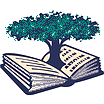|
 Visual
learning is a method to teach thinking skills: the
techniques based on visual learning – the graphical association of
ideas, concepts, data, images, multimedia and other information to
convey meaning – educate students to think with clarity, to process,
organize, and prioritize new information. Diagrams reveal models, interrelationships and
interdependencies and also stimulate creative and
critical thinking. Visual
learning is a method to teach thinking skills: the
techniques based on visual learning – the graphical association of
ideas, concepts, data, images, multimedia and other information to
convey meaning – educate students to think with clarity, to process,
organize, and prioritize new information. Diagrams reveal models, interrelationships and
interdependencies and also stimulate creative and
critical thinking.
Knowledge management strategies integrate with visual learning
through map animation (animated paths with voice), categorization
(with meaningful use of color and shape) and perception is
stimulated with voice. This "intelligent"
approach has a direct incidence in motivation and learning,
transcending the usual visual experiences. Besides transferring basic
information, and enabling learners to see relations,
structures, models and features that otherwise wouldn't be evident, our
strategies appeal to student's basic perceptive
faculties and processes.
|